[UPDATED: MAY 2023]
If all the lockdowns all over the world have taught us anything, it’s that working only online is possible. While maybe some of us may have never imagined shifting gears to remote work, it has come with many benefits. One of them being not to only work but also teach what we already know by sharing it on your own website or one of the many online course platforms out there.

It’s fair to say that it’s not a “brand-new” trend as course creation in itself has been around for a few years now, but with more time on our hands, and potentially less income due to salary cuts, some of us have taken the plunge into the world of online course creation. And since demand has grown, also the amount of course platforms has increased so to make your choice easier, below I will outline the pros & cons of the most popular course platforms available in 2023.
To put it simply, online course platforms streamline the process. While you can focus on putting together the content for your course, these platforms offer all the tools you need to develop, launch, teach, and manage an online course.
???? LearnWorlds for online school with in-depth learner analytics
???? Teachable for creating an online school with advanced marketing
???? Kajabi for marketing a course on autopilot
???? Kartra for all in one course creation suite
???? Udemy for launching your first course
???? Skillshare for teaching creative skills
???? Thinkific for building a course from scratch
???? Podia for selling digital products and memberships
???? MemberVault for sharing your know-how for free
???? MemberPress for community learning inside WordPress
???? LearnDash for selling your courses from your own website
???? LifterLMS for getting started with courses on your website for free
And just like with everything else in life there is no one fits all solution so let’s have a look at the various course platforms and how you can pick the right solution for your course needs.
What makes a great online course platform?
Before we move on, let’s start by making the difference between course platforms for and building and selling an online course and learning management systems (LMS). While the terms are often used interchangeably, LMS software is generally used either in a school setting, to help companies train their customers and employees, or in a self-hosted environment on your own WordPress website. The most platforms covered below, on the other hand, are designed for businesses and individual creators to earn money by selling their courses.
Online course creation platforms can be broadly divided into two categories:
Course Marketplaces vs Course Creation Software
In a marketplace, your course is a part of a catalog, and you have the option to customize your course landing page but not much else aside from the course content. Most marketplaces let you publish a course for free but take a share of course sales. The major advantage: course marketplaces provide you with an existing student base, so if you don’t have much of an online presence yet, you might want to dabble with these first.
Course creation software, on the other hand, offers many more customization options. You can create branded landing pages, choose from multiple content formats when building your course, and get the necessary tools to market your course. These usually charge a fixed monthly fee, and some platforms also charge a transaction fee.
Unsurprisingly, there’s no one-size-fits-all solution for creating a profitable course. Your ideal course creation platform is unique to your needs and goals. Are online courses your bread and butter? Then you need a platform that helps you reach the maximum number of students. Does teaching and engaging with students excite you? Then a course creator with interactive tools would work well. Are you creating a course to engage your existing audience? Then you’ll want a tool with robust marketing features.
While every platform has its own unique selling point, I judged the platforms below based on certain criteria:
- Content formats supported, including video, audio, PDFs, and images
- Editing features and customization options
- Whether or not they’re realistically affordable for small businesses
- Support for assessments: quizzes, exams, certifications, etc.
- Marketing and payment features
Below, you’ll find the pros and cons of online course platforms and also learning management systems that you can implement on your own WordPress website with the help of a plugin.
Best Platforms to Create and Sell Online Courses
If you’re thinking of creating and selling courses to people, these are the platforms you’ll want to explore further. Most of the course platforms come with similar features but depending on your goals and budget, you may prefer one of the others.
LearnWorlds

LearnWorlds is a powerful, easy-to-use and reliable training solution for individuals and enterprises. A fully customizable, white-label solution to train employees and associates, educate customers, or sell online courses to a wide audience. Feel free to read how I use LearnWorlds for all my course needs or visit The Course Creator Academy to check it out live.
| ???? PROS | ???? CONS |
| Includes options for live (group) session. | Monthly cost and transaction fees. |
| Provides in-depth learning analytics. | No free courses on lower paid plan. |
TEACHABLE

Teachable helps savvy course creators grow and nurture an online audience. To begin with, the platform offers various options to customize the look and feel of your course. Build a website that reflects your brand, create sales pages for launching your course, and if you happen to know some code, use the Power Editor to tinker with it. If not, edit the templates available. Teachable course builder accepts files from Dropbox, Google Drive, and OneDrive, among other content formats. Feel free to read how I use Teachable for all my course needs or visit my Creative Bootcamps school to see my courses.
| ???? PROS | ???? CONS |
| Complete control of what students see and interact with. | Monthly cost and transaction fees. |
| Great for beginners with easy setup and awesome support. | No live workshop options. |
KAJABI
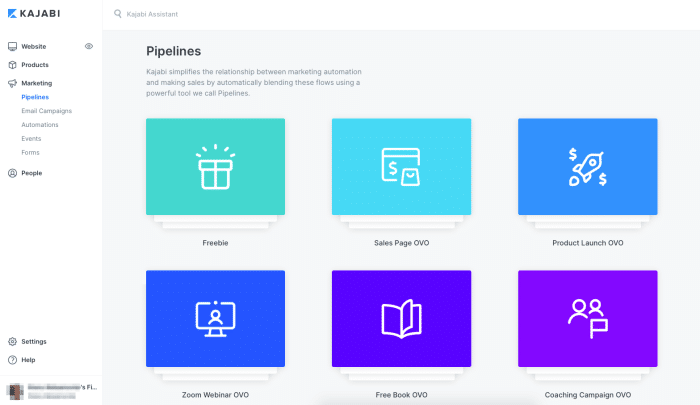
Kajabi gives marketing superpowers to busy course creators. Its marketing blueprints, called Pipelines, help you create an entire marketing funnel—from landing page and opt-ins to emails and course checkout—with just a few clicks.
| ???? PROS | ???? CONS |
| Marketing tools built into the software. | Higher costs to use. |
| Very customizable and integrates with many other platforms. | Student marketplace is pretty small with no filter search. |
KARTRA
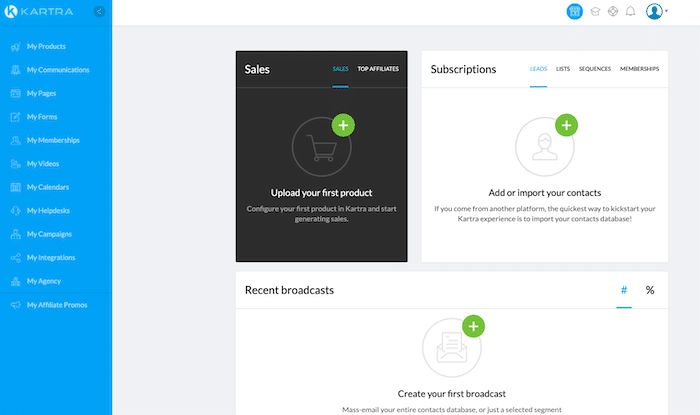
Kartra is not just an online course system, but an all-inclusive, email marketing, list building, web-hosting, business management platform designed just for marketers! It does all these things – and more – while connecting them all together in a single account for you to manage.
| ???? PROS | ???? CONS |
| All plans give you unlimited access to all of the tools. | Some users report a slower input and overall experience. |
| Video hosting included. | The tools provided are a little lacking in diversity. |
UDEMY

Udemy made teaching online possible. Today, the platform has over 40 million students enrolled in its courses and an instructor base of more than 50,000. To create a paid course on Udemy, you first have to apply to become a premium instructor. Once approved, you’ll see a series of easy-to-follow steps to help you create your first course. As you plan course content, keep in mind that all courses need at least 30 minutes of video and five lectures. You’re also welcome to add quizzes, assignments, coding exercises, and discussion prompts.
| ???? PROS | ???? CONS |
| Affordable prices for customers. | No standards for publishing – no verdict on what you’re making. |
| Plenty of tools to help with your course launch. | Loads of unregulated courses make it difficult to stand out as legit. |
SKILLSHARE
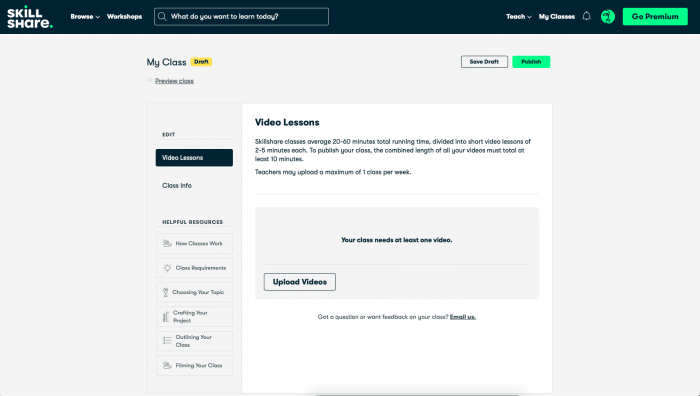
Skillshare is great for teaching creative skills, so if you’re an entrepreneur, designer, writer, photographer, or blogger looking to teach your craft online it may be just the course platform for you. You’ll find courses on all kinds of topics, both popular and niche: marketing, photography, cooking, hand painting, doodling, and even wall hanging.
| ???? PROS | ???? CONS |
| Free classes to enjoy. | No generated certificates. |
| Affordable for people on budget. | Very little regulation for teachers. |
THINKIFIK

Thinkific takes the guesswork out of course creation with its simple and ready-to-use templates. Because as you may already know, creating an online course is not as easy as most people may think. It takes time, a plan of action and of course full understanding of the topic you wish to teach.
| ???? PROS | ???? CONS |
| Good user interface for creators. | Lacking in features for basic plans. |
| Plenty of chances to introduce branding. | Disappointing affiliate feature. |
PODIA
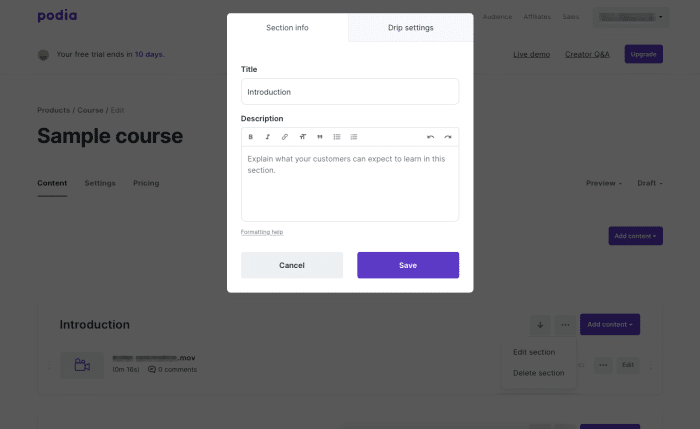
Podia lets you build an online store for your digital content. Create online courses, digital downloads, and even membership sites, all as part of one digital storefront.
| ???? PROS | ???? CONS |
| Affordable to use. | Not much support. |
| Easy to work with. | Limited course customization. |
MEMBERVAULT
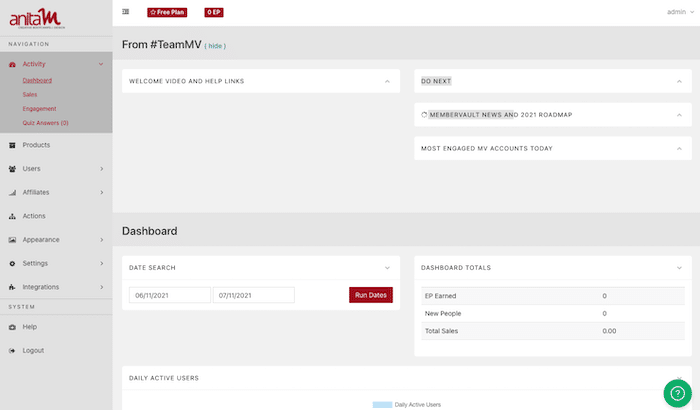
MemberVault is a relationship marketing platform where you set up your own marketplace. Within your marketplace, you can offer courses, sell products, and sell coaching services. Basically, you can use MemberVault to sell anything you want to create.
| ???? PROS | ???? CONS |
| Try before buy – free up to 100 students. | Course setup can be confusing at first. |
| Affordable paid plan options. | Limitation to 3 products on a free account. |
Best Platforms to Self-Host Online Courses
Self-hosting online courses have proven to be very popular recently. It grants a good level of freedom so it is pretty understandable that people would want to try it out. Here’s a list of the WordPress plugins you can use to get started. And if you don’t have your own website yet, download the DIY Website Starter Kit to help you design your first website without tech overwhelm.
MEMBERPRESS

MemberPress is a WordPress membership site plugin and LMS that makes it easy to charge your users for access to content and digital products such as software, e-books, and online courses you create.
| ???? PROS | ???? CONS |
| Built to work with WordPress. | Less support than one would like. |
| Easy to use even for beginners. | Still pretty new and underdeveloped. |
LEARNDASH

LearnDash is a WordPress learning management system (LMS) trusted by companies, universities, training organizations, and entrepreneurs worldwide for creating (and selling) their online courses.
| ???? PROS | ???? CONS |
| Easy to use course building tools. | Slow development cycle. |
| Makes selling single courses a snap. | Some design features aren’t optimized yet. |
LIFTERLMS
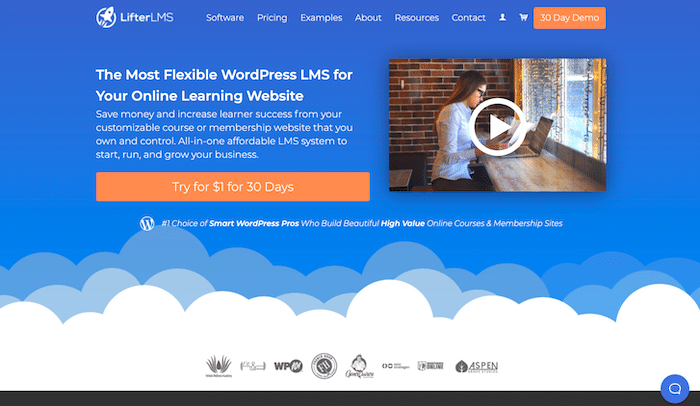
LifterLMS is a powerful WordPress LMS plugin that makes it easy to create, sell, and protect engaging online courses and training based membership websites.
| ???? PROS | ???? CONS |
| WordPress integration. | Lacking in marketing options. |
| Capable course builder. | You kind of need add-ons to make it work. |
Ready, Set, Let’s Teach
Whether you’re passionate about teaching, want to grow your audience, or are just looking to earn an income from your courses, there’s a platform to help you achieve your goals.
When picking a tool to launch your course, consider your budget, time constraints, current online following, and earning potential. If you’re simply testing the waters, start with a course marketplace or even create your own mini course. Once you’ve validated your course topic and content, only then proceed to launch your own course website. Don’t worry about migrating content from one platform to another. Most platforms support this, whether for free or for an added fee.

No matter which platform you wind up using, you should always put first the needs of your students and your skill level as a course designer. The costs, ease of use, and your long-term goals for teaching are all pretty important deciding factors in picking a platform to settle down in. And if all else fails, you can always outsource the tech part of course creation to someone else who specializes in it.
Editor’s Note: This post was originally published in July 2021 and has been completely revamped and updated for accuracy and comprehensiveness. In addition, I believe in transparency. If you use my referral links above, then I will get a small commission at no additional cost to you.
